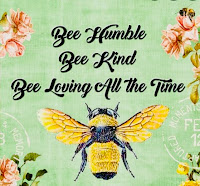Nest for Mason Bees
Nest for Mason Bees
Handle nature as a bee does a flower, extract its sweetness and in doing so let it flourish, do not damage it ~ John Muir
Mason bees (Genus Osmia, Family Megachilidae) refers to a species of solitary non-swarming non-stinging bee. They're called masons because of their nesting habits, when they use mud to seal the eggs.
Females live for up to 6 weeks, during which they have to build nests, mate, lay eggs, foraging for food to seal with each egg etc. Small wonder then that the female mason bee is extremely active working.
Remember mason bees don’t produce honey, so their prime goal for collecting pollen is to feed their brood. When a mason bee forages, it rolls in pollen to collect as much as possible. Without pollen baskets, it relies on the pollen sticking to their fur, making them excellent and valuable pollinators - by some estimates visiting up to 2500 flowers each day making them 1000 times more productive than a single honey bee!!
After mating, the females waste no time. Having previously sourced a suitable nesting site, the female lays a single egg, then adds the nectar she has ingested. Next she will deposit the pollen she has collected. She’ll repeat this process making as many dozens of trips for one single egg. Once she’s satisfied with the food store, she caps the opening with mud (now you know why they're called mason bees). Fascinating stuff!!
But the most interesting part is the egg laying behaviour. She can somehow tell the sex of the egg, and first she lays female eggs at the back of the nest, and males eggs toward the front. On average, up to ten cells are created per nest, using mud to partition each one. On an average a single female mason bee can lay 30 to 40 eggs in her lifetime.
This is the reason why the males emerge first and live for 2 weeks during which they wait near the nesting area for the females to emerge.
Building a Mason Bee nesting log
1. Holes of 5/16-inch diameter should be drilled in untreated wood as deep as possible.
Pro tip: Slight charring of the wood seems to help attract bees to the nest.
2. Holes should be smooth inside and closed at one end. To prevent disease, blocks should only be used for one year unless they are lined with paper 'mason bee' straws that fit the diameter of the hole. Straws are replaced yearly in order to clean the cavity. 3. Minimum depth is 5-6". Deeper the better
4. If not using replaceable straws then add a removable back board to make cleaning of the debris from the tunnels possible after the mason bees might have left the nest
a. Locate inside (or within 100 meter from) the gardenb. Location should be covered from the sun approx 3-6' above groundc. Locate in a partially shaded area facing SE direction to get morning sund. Shielded from the wind and fixed to a post so they don't shake in the winde. Protect the mason house from the predators by using a suitable covering of wire mesh or hardware cloth as a shield from woodpeckersf. Optional roof inclined at 22-½-inch degree angle to provide protection from the rain.
Food and water for bees:
1. Bees need nectar and pollen sources such as seaside daisy (Erigeron glaucus), blanketflower (Gaillardia x grandiflora), thyme (Thymus vulgaris), and coneflower (Echinacea purpurea). Also annuals like sunflowers (Helianthus annuus), Mexican sunflower (Tithonia diversifolia), California poppy (Eschscholzia californica), and zinnia (Zinnia elegans).2. Provide a shallow water source. Filling it with pebbles, marbles and floating cork to allow the bees access to the water without drowning
3. Clay soil (kept moist)
How to identify a Mason Bee: It’s much easier to identify a mason bee by its nesting behaviour than its appearance (smaller than honey bee, looks like a house fly with a distinctive metallic tint on their wings and body).
So why fuss with Mason bees? Rather ask why not? They check all the boxes. Very prolific pollinator. Extremely hardy. Self-maintaining (though we can help by creating nesting sites and replace the nesting tubes once a year). Non-swarming and non-stinging. Child and pet friendly.
Sources:
1. Keonig, Carol. “Mason Bee.” The Real Dirt Blog, ucanr.edu, 3 Mar. 2013, ucanr.edu/blogs/blogcore/postdetail.cfm?postnum=23425.
2. “How to Make a Homemade Mason Bee House.” Bee Keep Club, beekeepclub.com/how-to-make-a-homemade-mason-bee-house. Accessed 8 Aug. 2021.
3. Womack, Melissa. “12 Rules for Creating a Bee Friendly Environment.” Univ of California County Extension - Santa Clara County, 16 Oct. 2016, cesantaclara.ucanr.edu/index.cfm?blogpost=22100&blogasset=17948.
4. Shepherd, Matthew. “Nest for Native Bees.” Http://Www.Xerces.Org/Sites/Default/Files/2018-05/12-015_02_XercesSoc_Nests-for-Native-Bees-Fact-Sheet_web.Pdf, www.xerces.org/sites/default/files/2018-05/12-015_02_XercesSoc_Nests-for-Native-Bees-fact-sheet_web.pdf. Accessed 8 Aug. 2021.
1. Keonig, Carol. “Mason Bee.” The Real Dirt Blog, ucanr.edu, 3 Mar. 2013, ucanr.edu/blogs/blogcore/postdetail.cfm?postnum=23425.
2. “How to Make a Homemade Mason Bee House.” Bee Keep Club, beekeepclub.com/how-to-make-a-homemade-mason-bee-house. Accessed 8 Aug. 2021.
3. Womack, Melissa. “12 Rules for Creating a Bee Friendly Environment.” Univ of California County Extension - Santa Clara County, 16 Oct. 2016, cesantaclara.ucanr.edu/index.cfm?blogpost=22100&blogasset=17948.
4. Shepherd, Matthew. “Nest for Native Bees.” Http://Www.Xerces.Org/Sites/Default/Files/2018-05/12-015_02_XercesSoc_Nests-for-Native-Bees-Fact-Sheet_web.Pdf, www.xerces.org/sites/default/files/2018-05/12-015_02_XercesSoc_Nests-for-Native-Bees-fact-sheet_web.pdf. Accessed 8 Aug. 2021.






Comments
Post a Comment
Please keep conversations courteous and on-topic. Kindly don’t engage in trolling, flame-baiting, name-calling, insulting, stereotyping or gratuitous attacks. Thank you for being a good citizen.